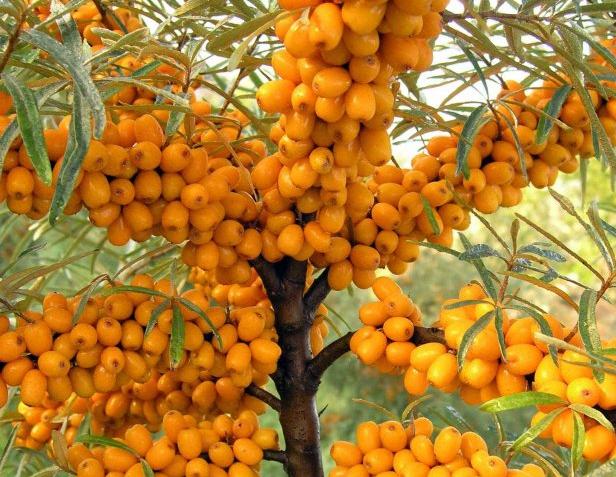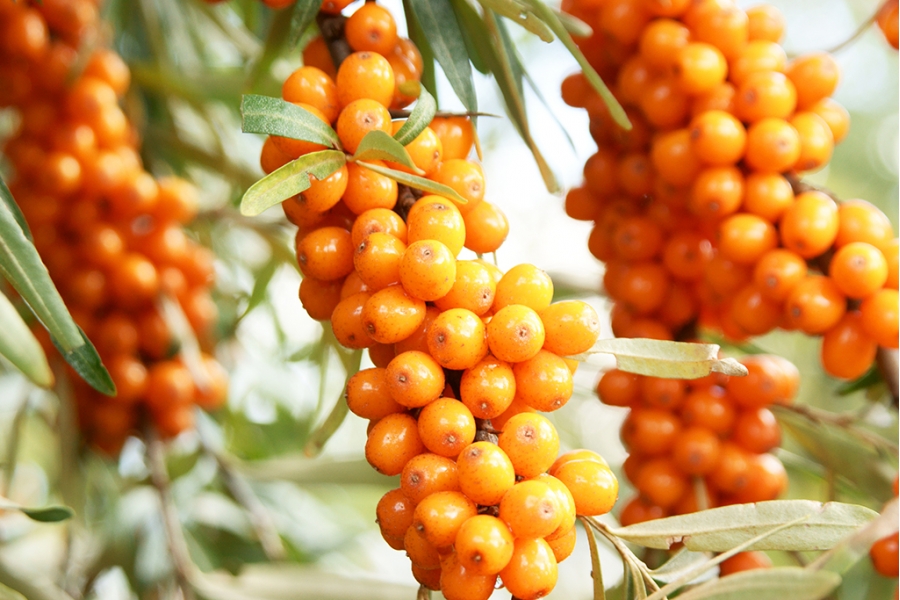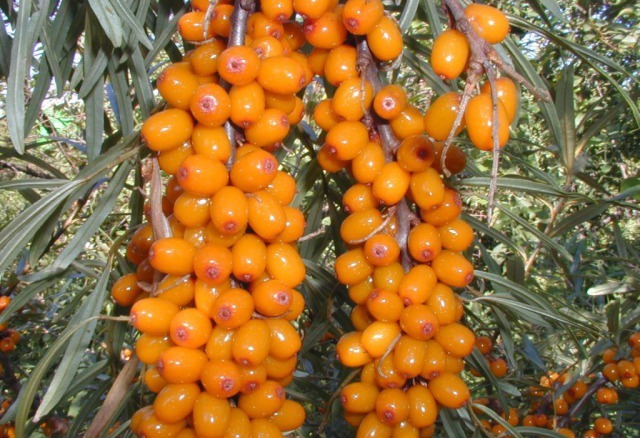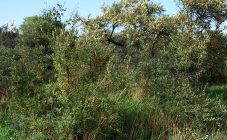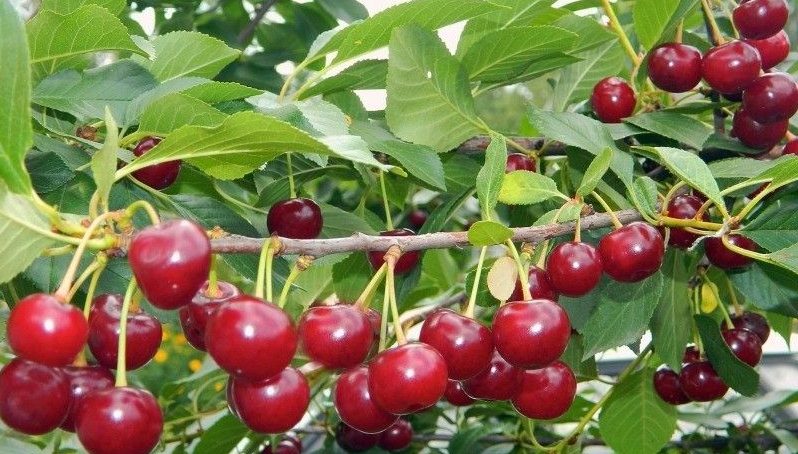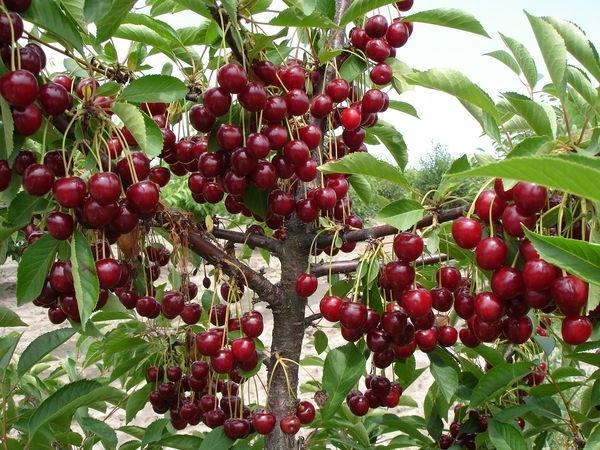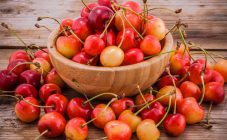Content:
Not so long ago, most gardeners considered sea buckthorn to be a wild berry, which is common throughout Siberia. Thanks to scientists, a large number of various varieties have appeared, which are distinguished by excellent taste qualities, impressive fruit sizes and other good characteristics. They can be grown not only in the Urals, but also in the Moscow region.
If you need large berries, it is recommended to purchase Essel. No desire to harvest through the thorns? There is a thornless sea buckthorn. This feature is in the Giant, Solar and some other species. Sea buckthorn Botanical boasts a high yield. It is these plants that are chosen for planting in industrial agricultural firms. Increased winter hardiness at Trofimovskaya, Zolotaya Cob and Dara Katun.
Overview of varieties
First, you should take a closer look at the variety of healthy berries.
- Sea buckthorn Essel belongs to the novelties of Siberian breeders. Excellent characteristics of the fruit are noted. One berry can weigh about 1.2 g. They are oval in shape, sweet in taste. Ripening occurs in August. The berries are weakly attached to the brush.
- Sea buckthorn Chuiskaya... The description of the variety will appeal to many gardeners. The crown of the tree is quite rare, and therefore there are no problems with its formation. One plant can bring up to 12 kg of harvest. The berries have an oval, slightly elongated shape and a sweet-sour taste. Ripening occurs in the summer months.
Sea buckthorn without thorns: varieties
These varieties can be called without exaggeration the pride of breeders. They do not pose a danger to the pickers and are easier to care for.
- Giant... There are 2 varieties of the variety: shrubs and trees. The crown has the shape of a cone, there are no thorns, it can grow up to 3.5 m. The fruits have a bright orange color, cylindrical shape and a short stalk. It boasts a sweet and sour taste and large berry size.
- Sea buckthorn Girlfriend has a bushy shape and weak spreading. Shoots without thorns, rather thin, growing straight. The culture has shiny leaves, light green color. The berries are large, oval in shape, weighing an average of 1 g. The fruits are consumed both fresh and put into various processing.
- Altaic grade... Crohn practically without thorns. The crop ripens at the end of August. The average weight of one berry is about 0.7 g. The taste is pleasant, there is a pineapple smell. The berries are easily separated from the stalk.
- Solar... This shrub boasts a large size, a spreading crown and no thorns. Berries weighing about 0.7 g have an amber color and increased oiliness.
- Sea buckthorn Excellent... The variety has an average ripening period, which falls on the end of August - beginning of September. Harvesting begins 4 years after planting. 7.1 kg of berries are removed from one shrub, the average weight of one is 0.76 g. The fruits are perfectly transported. The variety is winter hardy.
- Moscow pineapple sea buckthorn. This variety has berries weighing up to 0.6 g. They are pear-shaped, the skin color is dark orange, and there is a red speck at the top. The berries are easily detached from the brush. The ripening period is average, from 6-year-old bushes up to 14 kg of yield are obtained. Good winter hardiness. Suitable for growing in the North-West region and the Middle lane.
- In the description of the sea buckthorn variety Jam it is said that the shrubs are stunted, capable of reaching 2.5 m, which brings certain convenience when harvesting. Sharp spines are absent. The variety is frost-hardy, partially freezes under very strong frosts. Jam is a high-yielding variety, about 12 kg of fruit are obtained from one shrub. It is imperative to plant another pollinator with this sea buckthorn.
Large varieties
Wild plants are capable of producing berries weighing about 0.3 g. Cultivated varieties produce fruits weighing about 0.5 g. However, there are a number of varieties with berries weighing about 1.5 g.
- Sea buckthorn Openwork... The tree has a beautiful spreading crown, there are no thorns on the branches. Fruit skin is orange, cylindrical in shape. One berry weighs 1 g. It belongs to early ripening varieties. Additional positive qualities are frost resistance, good drought tolerance, immunity to diseases of fungal origin.
- Sea buckthorn Augustine... The weight of one egg-shaped berry with an orange skin is 1.1 g. Due to the fact that the fruits are formed into loose clusters, it will be quite easy to harvest. Shoots with few thorns. The variety is distinguished by early ripening, from one adult tree you can get up to 18 kg of berries.
- Sea buckthorn varieties Elizabeth... The shrub boasts a dense, tidy crown, so no pruning is required. The average weight of one berry is 0.9 g. The taste is sweet and sour. The fruit has long stalks that are easily detached from the brushes. Ripening period is late. A feature of Elizabeth is winter hardiness, immunity to plant pests.
Harvest varieties
Recently introduced sea buckthorn varieties have a high yield. If up to 6 kg of berries are harvested from some shrubs, then up to 18 kg from new products.
- Botanical... Most often, seedlings of this variety are planted in agricultural firms. If proper care is carried out, then about 20 kg of berries are collected from 5-year-old trees. The fruits are large in size, juicy taste, orange-red skin. The berries are separated from the stalks very easily and do not lose their presentation during transportation.
- Moscow beauty... Its varietal feature is the medium size of the shrub and the compact crown. The berries have a dessert taste, large size up to 0.6 g. Annually, up to 15 kg of harvest can be harvested from one sea buckthorn. Excellent winter hardiness, unpretentiousness to care and growing conditions are additional positive qualities of this variety. The Moscow beauty is reliably protected by an excellent immune system.
- Sea buckthorn Beloved... The shrub is of medium size, the crown has an oval-flat shape. Shoots practically without thorns. The leaves are light green at the top and silvery at the bottom. The fruits are oval in shape, they have a dense skin, slightly loose pulp. Ripening occurs in August. The yields are large and stable. Most often, berries are used for conservation. The variety is characterized by winter hardiness, an excellent immune system.
- Nivelena... The shrub is of medium size, the crown is slightly spreading, has the shape of an umbrella. The shoots are light brown in color, there are a small number of thorns. The leaves are small, and the fruits are large and have an orange-yellow color and a sweet and sour taste. Ripening occurs at the end of summer. During transportation, the berries do not lose their presentation. Like many other varieties, Nivelena is winter hardy and immune to various diseases.
What other varieties are there
In addition to the above varieties, the following are popular among gardeners:
- Sea buckthorn Perchik... Shrubs are medium-sized, spreading, spines in moderation. One berry weighs an average of 0.6 g, ovoid shape, orange skin. The taste contains sourness and pineapple aroma. The berries are mainly used for processing. Ripening period is average. The variety belongs to winter hardy.
- Sea buckthorn Herringbone... It grows in the form of a medium-sized shrub and reaches a height of up to 1.8 m. The crown is pyramidal, from the outside the culture can be confused with a young spruce.The leaves are narrow, have a green-silver color. The herringbone belongs to self-fertile varieties, but if a male plant is planted on the site, then the amount of harvest will increase significantly. Fruits are medium-sized with a sour taste, ripening later. Therefore, this sea buckthorn is most often referred to as ornamental crops, and not to fruit.
- Sea buckthorn Inya... Multi-stemmed shrub, crown sparse and spreading. The berries are large, have a cylindrical shape, the skin is orange-red. The taste is sweet and sour, there is a pleasant aroma. The variety is winter hardy. For some reason, it is considered the most popular in Tula.
- Ulala suitable for growing in the regions of Siberia. Multi-stemmed shrub, compressed crown. The shoots have a dark brown color, there is a whitish bloom. The berries are large in size, can reach a weight of 0.78 g. The shape is oval, the color of the skin is orange-red. Ripening period is average. Sea buckthorn perfectly tolerates low temperatures in winter, as well as frosts in spring.
Growing features
Sea buckthorn is suitable for both the garden and the vegetable garden. When planting a crop next to vegetables, a sufficient distance must be maintained. The fact is that garden soil is not the most suitable for such shrubs. In addition, sea buckthorn has a branching root system that diverges deep underground, which damages neighboring plants. The roots are not very deep and therefore difficult to damage. But the landing does not tolerate well, various diseases begin.
Sea buckthorn needs a lot of light, and therefore a darkened place will not work.
How pollination works
It is preferable to plant one female plant and two male plants. This is due to the fact that the latter very often die, besides, the best pollination of female seedlings comes from a pair of plants. Therefore, the gardener has many chances to harvest a crop that is distinguished by excellent taste. Male plants are planted near each other at a distance of less than 100 cm. However, there is also self-pollinated sea buckthorn.
In addition to the above varieties, there are also the following:
- Alei;
- Chechek;
- Tenga;
- Solar;
- Dwarf;
- Shipless;
- Vorobievskaya;
- Sudarushka;
- Etna;
- Pearl oyster;
- Sweet;
- Amateur;
- Present.
Among such a stunning variety, every gardener can easily find a variety that suits him.
